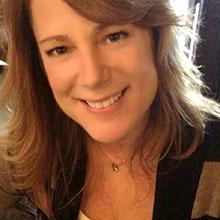Landscape Changes Could Spawn Tornadoes
(Inside Science TV) -- When tornadoes hit, they are often quick, deadly and come without warning.
In 2013, more than fifty people were killed during tornadoes.
"We have tornadoes at daytime, we have tornadoes at night," said Dev Niyogi, a climatologist at Purdue University in West Lafayette, Indiana.
Now, researchers at Purdue say there are certain areas that may be more likely than others to be hit by tornadoes.
"The region just around the city becomes a hotspot for where a tornado can occur," explained Niyogi.
Scientists have identified tornado transition zones -- places where the landscape suddenly changes -- where tall buildings end and farmlands begin, or where a forest stops and flat land starts.
"Roughly ... 60 percent to two-thirds of the tornadoes form within a mile or within the five miles of the city," said Niyogi, who directed this research in urban meteorology and tornadoes. It was performed with Olivia Kellner and Paul Schmid at Purdue's Department of Earth, Atmospheric and Planetary Sciences and Department of Agronomy.
Abrupt landscape changes such as from flat farms to big cities can disrupt air patterns. Air from these different zones mix together and can create severe storms and tornadoes.
The most vulnerable areas, according to Niyogi's research, are the areas just outside cities where the urban landscape turns into rural landscapes.
The research might explain why mobile home parks are often called tornado magnets, because they are typically located just outside city limits in open fields.
Modifying landscapes around these cities could help these areas be more tornado-resistant.
The study found tornado touchdowns in urban areas occur approximately 1 to 10 miles from the city center.
Computer-generated graphics courtesy of Carlos Vanegas and Ignacio Garcia-Dorado under the direction of Dr. Daniel Aliaga at the Purdue University Department of Computer Science.

